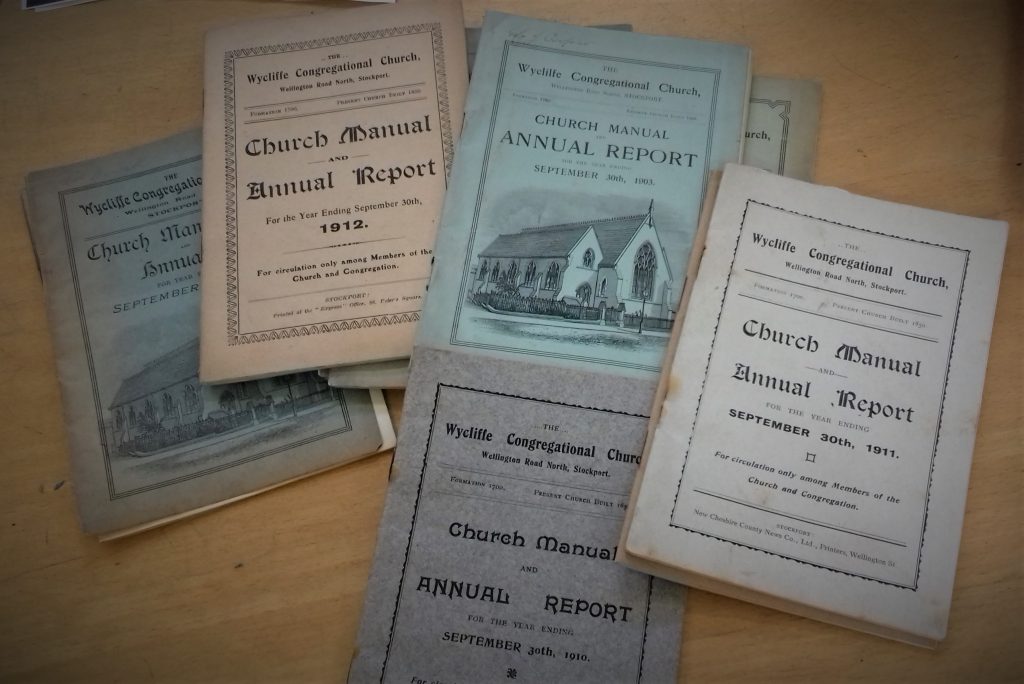
The beginning…
Wycliffe Congregational Church was named after John Wycliffe, who translated the bible into English in the 14th century and campaigned for reform in the Roman Catholic Church.
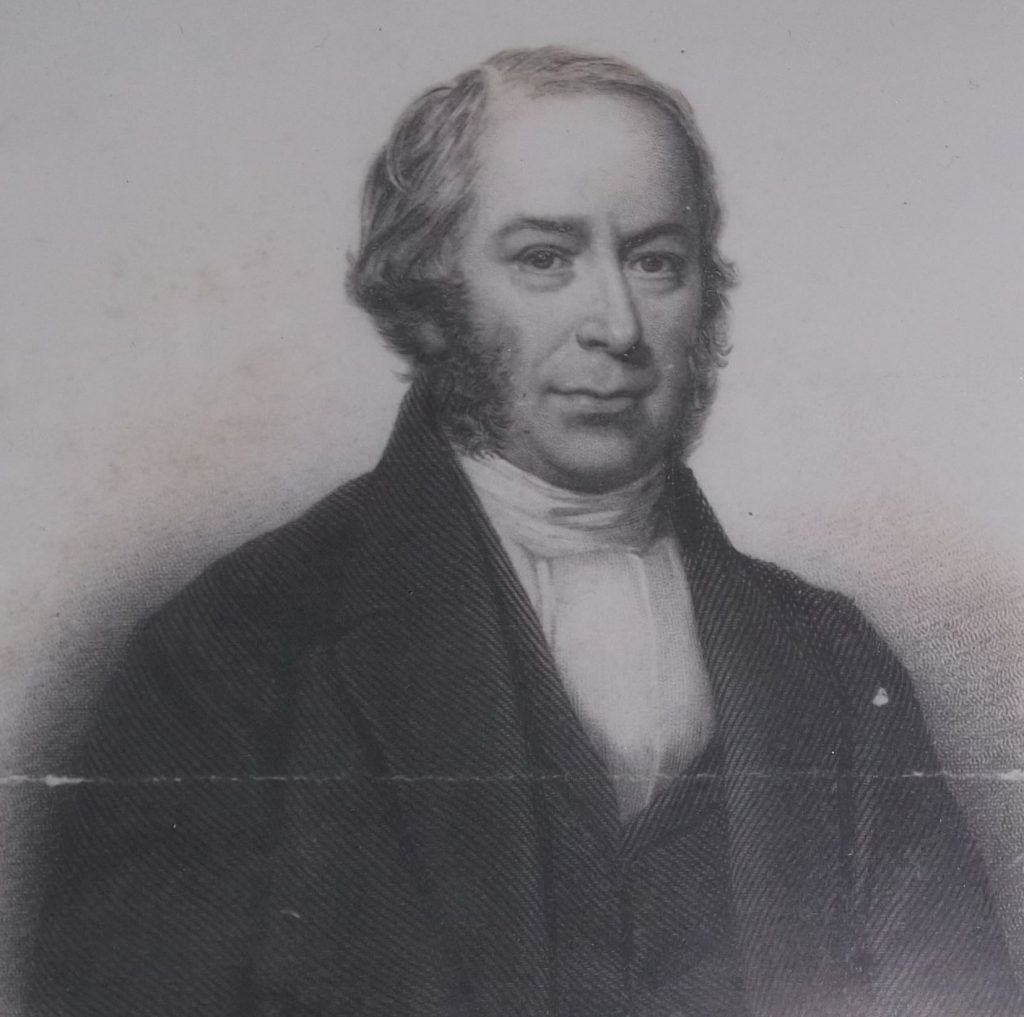
The main founder Rev. John Thornton, was minister at the Tabernacle Congregational Chapel on Hillgate in1848 when there was a disagreement about proposed alterations. Mr John Hampson (Rev Thornton’s brother-in-law) offered £500 toward the building of a new chapel, and the members of the congregation voted 44 to 43 to accept the offer.
Following this split, Rev Thornton and some of his congregation moved to a building on the corner of Lawrence Street and Wellington near St. Petersgate (end of the road behind the library), now demolished (known as the Albert Hall, and later a skating rink and cinema) whilst building began on the new chapel.
The architect was Mr. Edward Walters, who designed Manchester’s Free Trade Hall which opened 6 years after Wycliffe in 1856. The builders were headed by a Mr. Hollins, and subscriptions came from various gentlemen, including James Kershaw, Stockport’s M.P. at the time, James Sidebottom of Stalybridge and Joseph Heaward, local cotton merchant. The cost was £2,653 & 4 shillings – including £100 for the surrounding ‘wall and palisading’. It was advertised to accommodate 620 adults and 120 children for worship.
The spot on Wellington Road North was chosen as there were already several Independent and Wesleyan Churches in the town centre, and Heaton Norris had a rapidly increasing population, and the handy train station and road links.
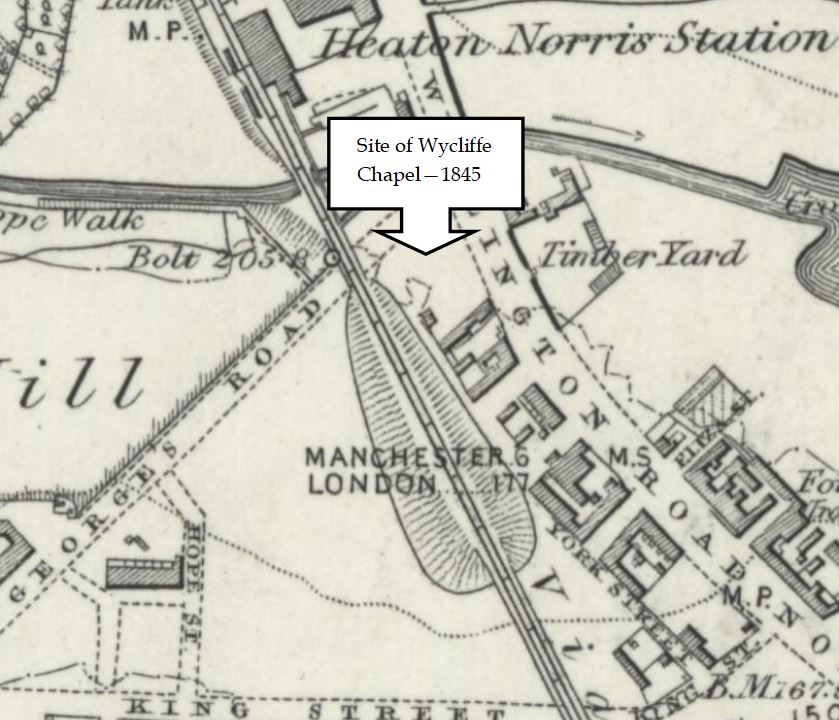
1845 (surveyed) OS map above with no Wycliffe Street on – this was constructed between 1874 & 1892 continuing from where York Street is marked.
A fundamental part of the new Chapel was the school in the basement area, originally built to accommodate 400 children. By 1851, 305 places were taken. Rev John Thornton was a keen promoter of free education and was Secretary and one of the co-founders of the British School on Wellington Road South – what is now the Coroner’s Court opposite the college.
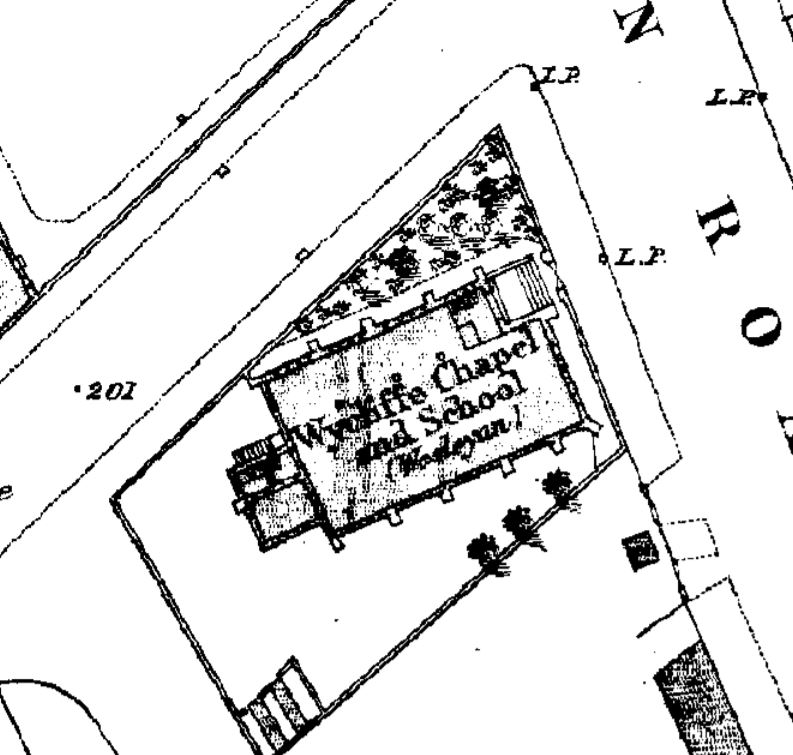
The OS map of 1873 shows the original layout – more on this later, but it likely that the structures at the back were a boiler house and caretakers room/kitchen. The Stockport Mercury explained that inside there were just the West (organ) and North galleries. It is unclear how many storeys the structures at the back had, but there are steps, so they probably accessed the organ gallery.
The original organ was described in 1853 as a ‘German pedal organ’. An advert for an organist stated that “None need apply but those thoroughly competent”.
Opening
To quote Rev Thornton “When I first projected the founding of a new chapel it was deemed one of the most utopian schemes that ever entered into the brain of an enthusiast, and it was pronounced a castle in the air, but here it was, a solid and substantial building”.
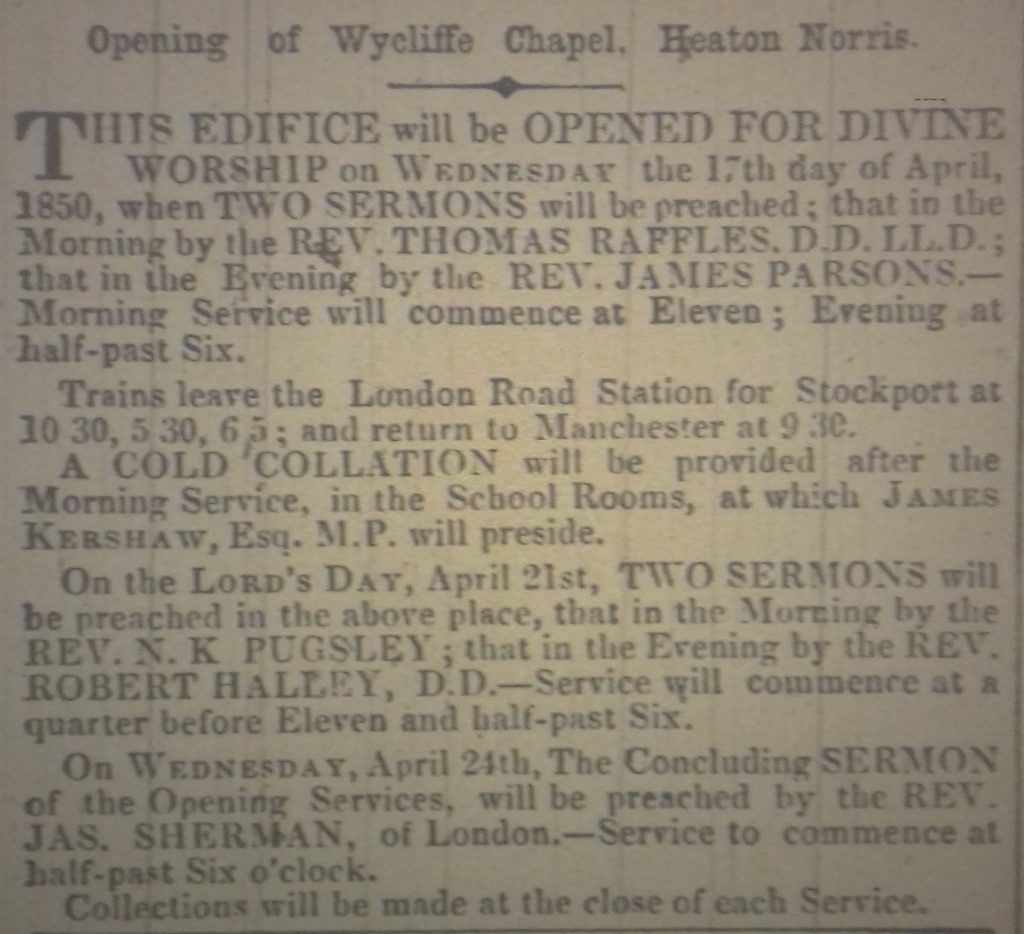
The new Chapel opened on Wednesday 17th April 1850 with morning and evening services, and a ‘cold collation’ in the schoolroom provided by Mr. P. Beard of the Hope Inn. A fundraising Bazaar was then held on Tuesday 30th April for 3 days. This included various stalls of goods including Baxter’s Oil Prints of the Queen and Prince Albert, music, a demonstration of phrenological developments for 1 shilling a go, and displays of dissolving views from a magic lantern. However, whilst visitors were enjoying this show, members of a ‘swell mob’ managed to help themselves to a few purses.
In 1856, the Manchester Guardian reported on thefts of small amounts of money from a tin in a cupboard in Wycliffe’s schoolroom. The schoolmaster, Ephraim Vernon, tipped off the police about the mystery and a constable Whieldon hid himself in the room after the school closed. He placed a couple of marked ha’pennies in the box and waited. Eventually, he saw the culprit enter through the aperture for the ventilator, go to the cupboard, and take the box. Whieldon arrested the lad, named John Lee, who was just seven years old. The case went to court, but the magistrates “ordered him to be given up to his parents…due to his youthful age”.
